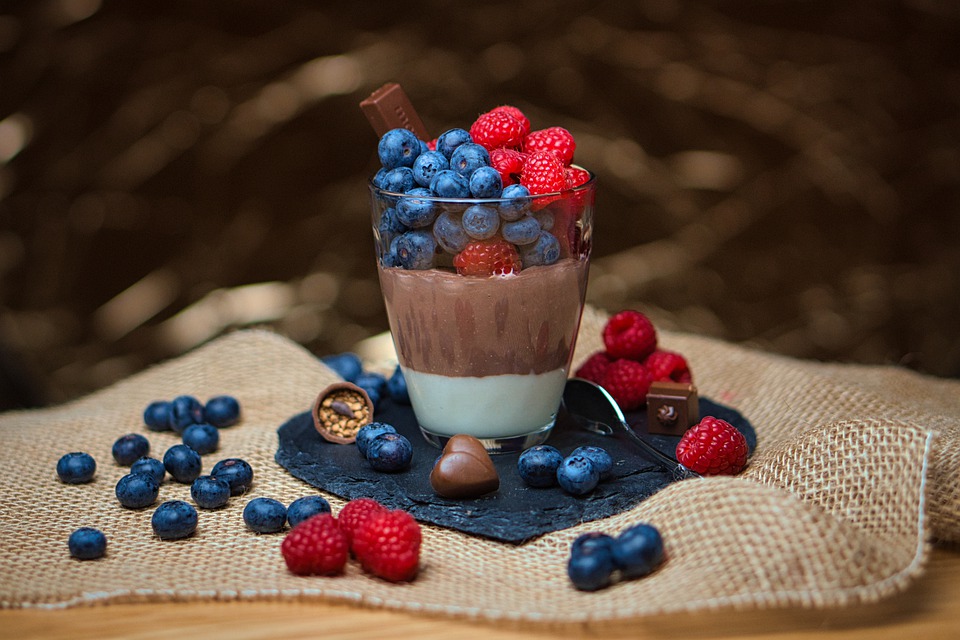Who doesn’t enjoy a well-made pudding that has cooled and set? Pudding is a dish that may be found in some form in almost every country. Making pudding may not require a complicated recipe, but making one is no cakewalk. Beginners may have a difficult time getting their puddings to set. You may be creating your pudding from scratch and are concerned that it won’t develop in time for serving. That’s why, if you’re looking to up your pudding game, understanding how to thicken pudding is a great way to do so. A simple pudding recipe has been around for decades, and many of us have probably tried it at some point in our lives. Silky and mouth-pleasing, it is served chilled and has a pleasant texture.
Several elements make pudding, such as flour, milk or milk cream, sugar, and eggs. Pudding is typically served hot with extra sauces such as chocolate sauce or custard.
Desserts such as baked banana pudding topped with vanilla ice cream or other fruits can be paired with puddings to create a unique dessert.
To some, thickening pudding may seem unnecessary, given how simple it is to make.
Also Read:Best Outdoor Cooking Set Review
Is it possible to make the pudding more Thicker?
As a result, we’re faced with the dilemma of either making the right pudding consistency or salvaging a watery mess.
A pudding that won’t firm up can be fixed in several ways, just as there are different ways to make pudding.
You can choose the best method based on your preferences and the components you have on hand in your home.
The following tips and step-by-step directions will help you confidently complete your task.
Tips for making pudding thicker
To see if the pudding gets thicker, try stirring the ingredients for a more extended time. Do not use soy milk or any other substitute because the end product will not be as planned.Pour a little extra pudding mix into the bowl of pudding you’ve already cooked to thicken it up a bit.
You should use less milk than the package recommends as a rule of thumb.
To thicken the pudding, add a tiny amount of powdered sugar to the mixture one tablespoon at a time, mixing thoroughly after each addition.
Put your runny pudding in the fridge for a few hours and see how it goes. Your pudding may become more solid if you keep it in the refrigerator for an extended period and at a low temperature.
To avoid over-stirring the pudding, use a spoon instead of a whisk to avoid incorporating too much air into the mixture.
In a custard, the proportion of whole eggs and egg yolks might vary depending on the recipe. Custard made with extra yolks is more affluent and softer, while custard made with real eggs is stiffer.
Rice starch, not rice flour, should be your go-to ingredient. Rice starch is the most effective thickener and the most finely textured rice flours, whereas rice flour is the most coarse.
The Best Methods for making Thicker Pudding
Having learned what you need and what to avoid, choose any of these ways that work best for you.
Pudding with a thickening agent
Eggs are almost always used in some way in nearly every dish. Both egg whites and yolks can assist in thickening your pudding in various ways, depending on the recipe’s instructions.
Remove the egg whites from the yolks. Incorporate the yolks, sugar, and a quarter of the whole milk into the mixture with a whisk. To complete the base, you can add the balance of the milk and any other ingredients you choose.
Cook on medium heat until the base reaches a simmer, then turn the heat down to low-medium and let it simmer for a few minutes.
Get a spatula and maintain stirring throughout the cooking time. Make the base thinner or thicker to your preference. I estimate that it will take roughly 15 to 20 minutes total. The whites can also be used to thicken your pudding. Whisk the whites until they reach a soft peak. Fold in a small number of your beaten whites into your cooled foundation one at a time.
Use Milk Substitutes
You can speed up this thickening process by using these things in place of milk.
Enzyme-Processed Milk
You can use unsweetened evaporated milk instead of half of the milk in your recipe. Milk that has already been boiled down is what this is.
Condensed milk
Condensed milk can also be used to substitute for 14 of the whole milk. If you’re using sweetened condensed milk, you’ll want to alter the sugar proportions accordingly.
Adding Starches to Pudding to Make It Denser
Starch is already a common ingredient in many recipes. You can, however, add some if your pudding is too runny and you don’t have any on hand. Regular flour, corn starch, and arrowroot starch are the most commonly used thickening agents. Potato starch should not be used because of the distinct flavor and odor it produces.
Corn starch and arrowroot powder have a higher thickening power than regular flour, so be careful not to overuse them in your recipes.
Make a sludge out of it by adding some of your milk.
Begin by putting in the remaining milk, which will form the pudding’s base.
Cook it to the desired thickness on low heat.
Vanilla extract or other flavorings can be used if desired.
Thickening with Gelatin
Many experienced cooks like to use gelatin as a thickening agent. But if you’ve never worked with them before, they can be a bit of a challenge. If you plan to offer your pudding to vegetarians, avoid using gelatin because it is made from animal products. However, it is suitable for the ketogenic diet.
Adding Gelatin as a Binder
Powdered and sheet gelatins are also available. Powdered versions are easier to work with, so get them if you can. Sheet gelatins, on the other hand, work just as well.
Gelatine In Pulp Form
Use whatever method you like to make your cold pudding base without starches.Gelatin powder should be measured out. 1-114 teaspoons of gelatin powder per cup of liquid is a good starting point. Before adding it to anything, soak your gelatin in 2 teaspoons of warm water for 5 minutes. Cook at a low temperature until it’s done. The gelatin’s ability to thicken the base will be wiped off if you boil it. Use a sieve to remove any lumps from your pudding made using gelatin. Set the base by placing it in molds and cooling them.
What makes your Pudding So Soggy?
When making pudding, it’s essential to know that any additional liquid will result in the formation of a thin layer of watery film on top and at the bottom of your puddings.
Based on chemical principles, when you combine two liquids (milk and eggs in this case), you end up with a third type of liquid (the mixture of the two).
In this scenario, the emulsion is made up of tiny droplets suspended in a liquid medium. Although your puddings may appear thick and creamy, they will still include a watery layer at the bottom. Cooking your puddings thoroughly or serving them in soup bowls if they aren’t cooked all the way through will eliminate this layer, which is in addition to the one that will be on top of them.
Conclusion
We have tried our best to provide you with tips and tricks to make pudding thicker. Now you have a thing to avoid and the best methods to follow. So, enjoy your pudding!


Hello! I’m trying to explore more and provide my readers with more. Besides being a writer, I’ve also worked as an Editor and Proofreader.
